2023 Guide: Every Starship Enterprise Across Star Trek's Multiverse
Explore every Starship Enterprise from Star Trek's vast universe, from the iconic originals to alternate realities and future visions.
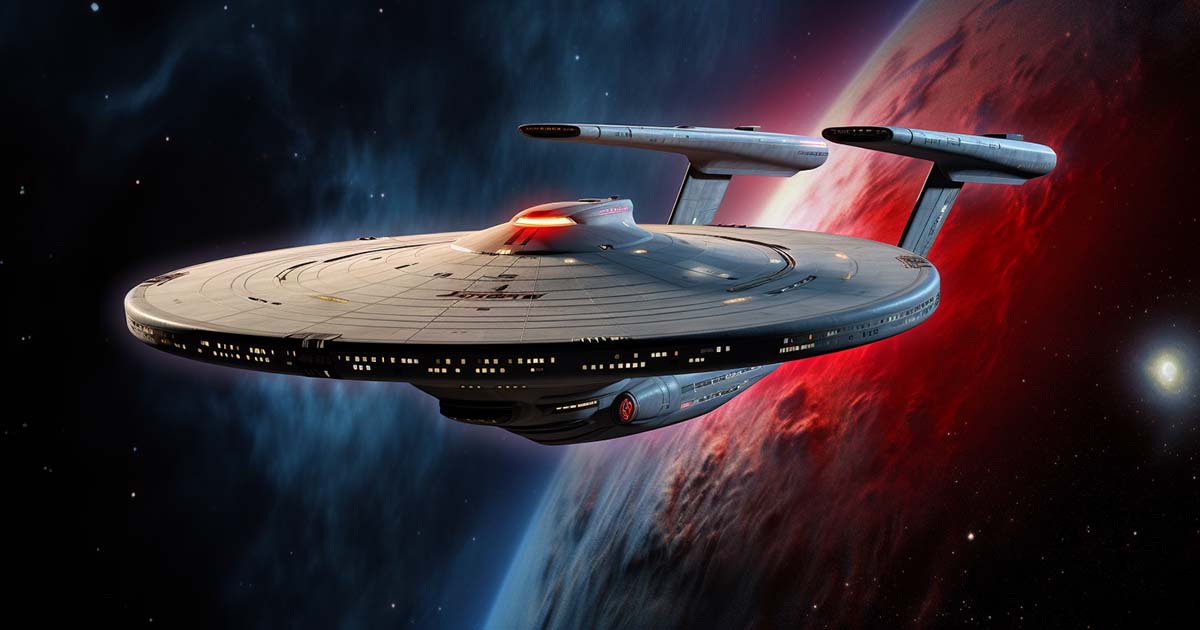
Ah, the starships named Enterprise, each a gleaming testament to human (and Vulcan, and occasionally android) ingenuity, floating through the cosmos like a series of increasingly expensive special effects. Let's warp through the lineage of this illustrious nameplate.
| Enterprise Version | Star Trek Series or Movie | Captain(s) |
|---|---|---|
| USS Enterprise XCV 330 | Background Lore | Unknown |
| Enterprise NX-01 | Star Trek: Enterprise | Jonathan Archer |
| USS Enterprise NCC-1701 | TOS, Strange New Worlds | April, Pike, Kirk |
| USS Enterprise NCC-1701 (Kelvin Timeline) | Star Trek (2009), Into Darkness, Beyond | James T. Kirk |
| USS Enterprise NCC-1701-A | The Voyage Home, The Final Frontier, The Undiscovered Country | James T. Kirk |
| USS Enterprise NCC-1701-B | Star Trek Generations | John Harriman |
| USS Enterprise NCC-1701-C | ST:TNG "Yesterday's Enterprise" | Rachel Garrett |
| USS Enterprise NCC-1701-D | ST:TNG, Generations, Picard | Picard, Riker (Acting), Jellico |
| USS Enterprise NCC-1701-E | First Contact, Insurrection, Nemesis, Picard | Jean-Luc Picard, Worf |
| USS Enterprise NCC-1701-F | Star Trek: Picard | Elizabeth Shelby |
| USS Enterprise NCC-1701-J | ST: Enterprise "Azati Prime" | Dax |
| ISS Enterprise NX-01 (Mirror Universe) | ST: Enterprise "In a Mirror, Darkly" | Forrest, Archer (USS Defiant) |
| USS Enterprise (Alternate Reality) | Star Trek: Discovery (alternate timeline) | James T. Kirk |
USS Enterprise XCV 330
This Enterprise is the disco ball at the Starfleet party, the one that everyone knows kicked off the shindig but didn't stick around for the slow dances. It's like your great-great-grandfather's horse and buggy parked next to a Tesla—quaint, a bit odd, and you're not quite sure how it works, but you're glad it existed because it means you're not walking to the stars.
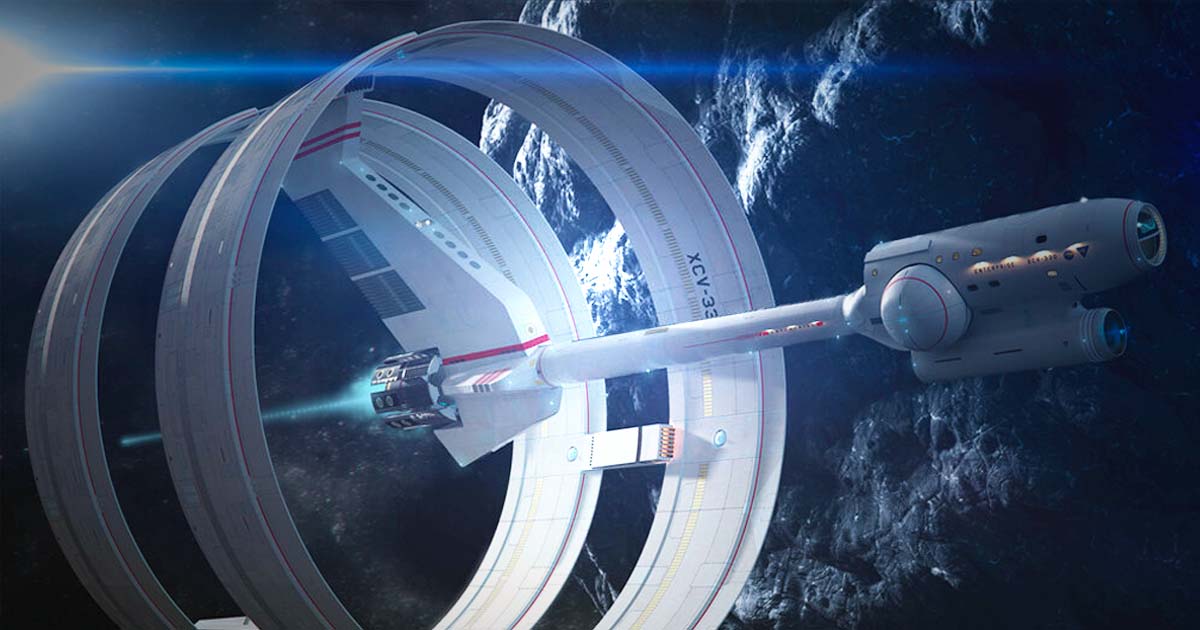
The XCV 330 is enshrined in the lore of the Federation, a testament to the early days of space exploration when humans were just taking off their training wheels and saying, "Look, no hands." as they reached for the stars. It's the ship that boldly went where no one had gone before, probably because no one else had figured out how to make a ship that was basically a giant hula hoop with engines.
As for its captain and crew, they remain shrouded in the mists of time, unsung heroes who paved the way for the Enterprises to come. They probably didn't fight off Borg invasions or tangle with Q, but they might have had some wild adventures convincing alien species that, yes, this is actually a spaceship and not an avant-garde art installation.
In the grand tapestry of Star Trek, the USS Enterprise XCV 330 is the funky stitch that makes you smile, nod, and say, "Ah, the '70s, when design was bold, ambition was high, and ergonomics were an afterthought."
Enterprise NX-01
The original gangster of the Enterprise lineage, the NX-01, was like the Wright Brothers' Flyer but with warp engines and less wood. Under the command of Captain Jonathan Archer, it zipped around the galaxy, initiating humanity's first "oops, sorry we broke your space stuff" moments. It was the little ship that could, and it did, all without the aid of a holodeck for stress relief.
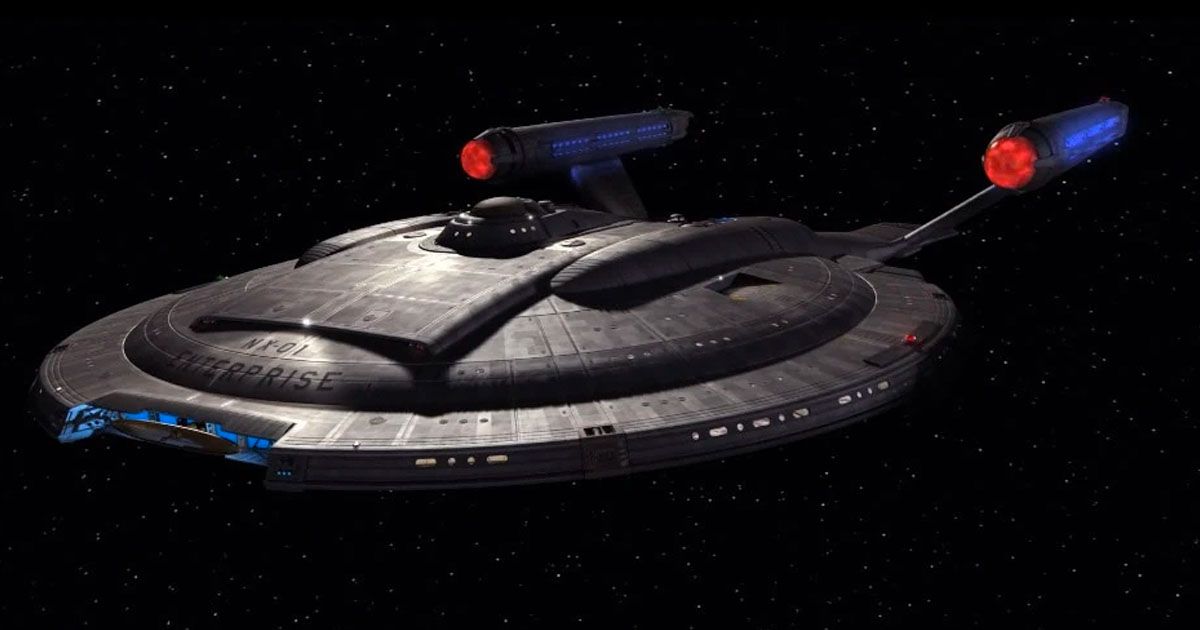
Archer —a man whose diplomatic style was often as subtle as a laser beam— had a way of making first contact with new species that usually involved some form of misunderstanding, a chase scene, and an eventual sit-down over a meal that definitely wasn't chicken.
The NX-01 didn't have the sleek lines of its future descendants; it was more like a Swiss Army knife in space—functional, a bit clunky, and packed with enough gadgets to make a 22nd-century MacGyver weep with joy.
This plucky prequel ship didn't have the luxury of photon torpedoes at first, relying instead on spatial torpedoes, which were about as intimidating as throwing popcorn at a Klingon and expecting him to say "thank you." And shields? Please. The NX-01's idea of shields was more akin to hoping really hard that the incoming fire would somehow miss. It was a vessel that relied on its polarized hull plating, which was the space equivalent of telling your crew, "We've got an umbrella, it might rain photon blasts today."
But what the NX-01 lacked in firepower and fancy holographic distractions, it made up for with a scrappy, can-do spirit that was as infectious as a case of Rigellian fever. It was the ship that looked at the vast, unknown expanse of space and said, "Hold my beer," which, in retrospect, may not have been the most reassuring thing to say to a crew about to face the unknown.
The NX-01's voyages were filled with the kind of adventures that would make future Starfleet cadets think twice about their career choices. From time-traveling Nazis to confrontations with the mysterious and sultry Orions, Archer's Enterprise was the little ship that not only could but did so with a style that was part cowboy, part explorer, and all heart.
In the end, the USS Enterprise NX-01 may not have had the staying power of its lettered successors, but it carved out its place in history with the tenacity of a terrier chasing a comet. It was the ship that proved humanity could take a lickin' and keep on tickin', boldly going where no one had gone before, even if it meant occasionally having to apologize afterward.
USS Enterprise NCC-1701
The NCC-1701, no bloody A, B, C, or D. This is the ship that boldly went where no man had gone before, and then some.
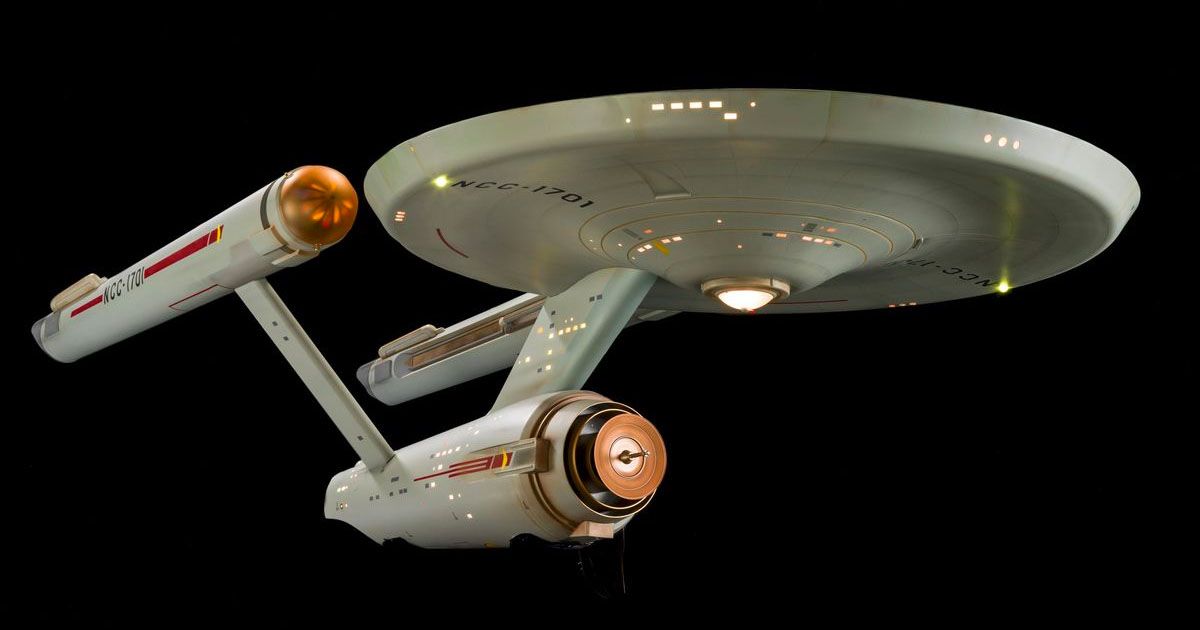
Captained by James T. Kirk, it's the hot rod of space that faced down Klingons, Romulans, and even a god-like entity who asked for a starship (talk about needy). It was refitted, got a paint job for the movies, and eventually self-destructed over the Genesis Planet because Kirk doesn't believe in trade-ins.
In fact, the NCC-1701 had more refits than a celebrity with a plastic surgery addiction, each time emerging from spacedock like a phoenix with a fresh coat of paint and an eagerness to tackle the final frontier. It's the ship that taught us that even in the vacuum of space, you can hear a Scottish engineer scream about the laws of physics.
But let's not forget the time this Enterprise carried a pair of humpback whales in a makeshift aquarium. Because when Earth is threatened by an alien probe demanding to speak to whales, who're you gonna call? That's right, the Enterprise, turning what could have been the galaxy's weirdest missed call into a feel-good story of the century.
Alas, the NCC-1701 met its fiery end not in battle, but in a self-destruct sequence over the Genesis Planet because sometimes you have to blow up your own ship to save it. It was a Viking funeral for a vessel that had been more than a ship; it had been a home, a character, and a testament to the spirit of exploration.
In the end, the USS Enterprise NCC-1701 was more than just a collection of decks and warp nacelles; it was the heart of a franchise, a beacon of hope, and the most iconic silhouette in the star-studded expanse of science fiction. It was, and always will be, the ship that made us look up at the stars and dream of what could be.
USS Enterprise NCC-1701-A
The A was a consolation prize for Kirk after the original was blown up. It's like getting a new puppy after your old one... well, you know.
In some sense, this ship was the universe's way of saying, "Sorry about your old ship, here's a new one with that new starship smell." It was the spacefaring equivalent of a mid-life crisis sports car, except it was handed over by Starfleet instead of bought sneakily during a weekend away at Risa.

In "Star Trek IV: The Voyage Home," the Enterprise-A became an unwitting Noah's Ark for a pair of humpback whales named George and Gracie. Because nothing says "we come in peace" quite like kidnapping marine life from the past to appease a giant, moody space probe in the future. It's the sort of thing that would have environmentalists chaining themselves to the warp nacelles if they weren't so busy being relieved that Earth wasn't being turned into a giant ice cube.
Captain Kirk, who had a knack for bending Starfleet regulations so far they could be used as a hula hoop, piloted the Enterprise-A with the same bravado and disregard for the rulebook that had become his trademark. This was the ship where the crew learned that you could indeed teach an old Vulcan new tricks, especially if it involves colorful metaphors and a crash course in how to curse in 20th-century English.
The Enterprise-A's tenure was short-lived, much like the lifespan of a mayfly or the attention span of a Tellarite at an opera. It saw the crew through thick and thin, from the diplomatic faux pas at Nimbus III to the center of the galaxy, where they met a god-like entity with an ego so large it had its own gravitational pull.
In the end, the USS Enterprise NCC-1701-A was retired early, possibly because Starfleet's insurance premiums skyrocketed with Kirk at the helm, or perhaps because they simply ran out of letters for the registry. But it went out in style, sailing into the starset while the crew moved on to other adventures, proving that while ships may come and go, legends—and questionable decisions involving time-travel and marine biology—last forever.
USS Enterprise NCC-1701-B
The USS Enterprise NCC-1701-B —the ship that had the unenviable task of following in the warp trails of two legendary predecessors— was like the middle child who decided to become an accountant because, well, someone in the family had to be responsible.
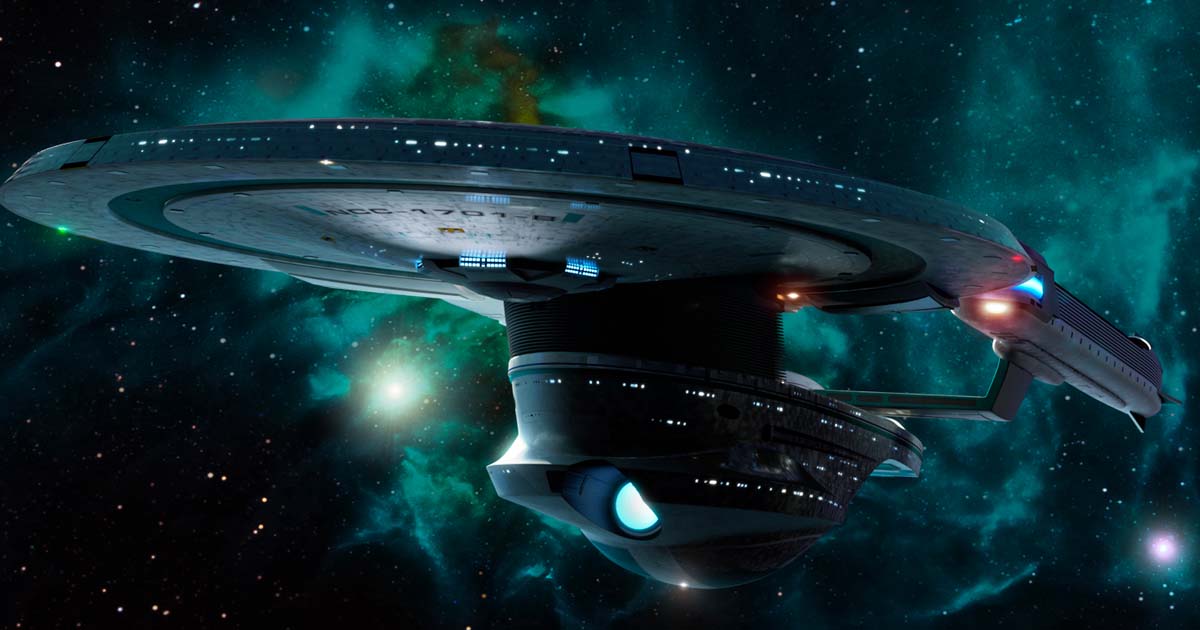
Launched with more pomp and circumstance than a royal wedding, the B was the ship that made you say, "Wow, this is... nice," while secretly missing the razzle-dazzle of the ones that came before.
Under the command of Captain John Harriman, a man who probably thought his first day would involve a leisurely cruise around Pluto, the B's maiden voyage quickly turned into a rescue mission because the universe just couldn't give the guy a break. It's like throwing a party and having your guests immediately clog the toilet.
This was the ship where we learned that if you're going to have a champagne bottle smashed against your hull, make sure it's not during a crisis involving energy ribbons and famous Starfleet officers getting trapped in them. Yes, the B had the distinction of being the backdrop for the disappearance of none other than James T. Kirk, who was sucked into the Nexus while saving the day, because apparently, retirement was just too boring.
The Enterprise-B looked sleek, with its Excelsior-class lines and that new starship tech smell, but it was a bit like a tricycle with rocket boosters: impressive, but you wouldn't necessarily want to take it on the highway. It had all the latest gadgets, including a deflector shield that could be described as "almost ready" and "nearly operational," which in Starfleet terms means, "We're still figuring out which button does what."
In the grand scheme of things, the USS Enterprise NCC-1701-B was the ship that bridged the gap between the old guard and the new, a vessel that carried the torch (and occasionally dropped it) during a time of transition. It may not have had the most auspicious start, being upstaged by a legendary captain's dramatic exit, but it served as a reminder that every ship has its day—even if that day involves unexpected detours into spatial anomalies.
So here's to the Enterprise-B: a ship that proved heroism is often a family trait, and that even in the vastness of space, you can't escape the shadow of your older sibling, especially when he's James T. Kirk.
USS Enterprise NCC-1701-C
This ship had a brief but heroic role in the episode "Yesterday's Enterprise." It popped into the future, got into a tussle to help the Klingons, and ensured peace. It's the equivalent of a time-traveling diplomat with phasers.
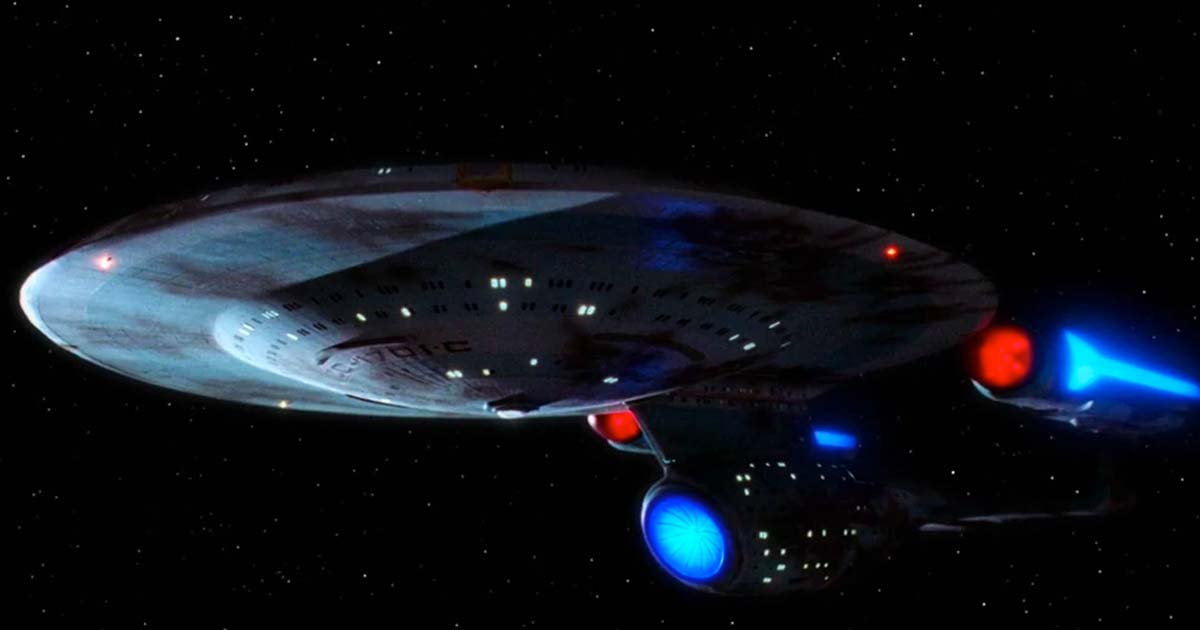
Captain Rachel Garrett helmed the C, and she was the kind of captain who probably had "I'll think about that tomorrow" embroidered on her pillows. Her ship wasn't equipped with a cloaking device, mainly because Starfleet believed in the power of positive thinking as their main defense strategy. The C was the kind of ship that would show up to a phaser fight with a strongly worded letter asking everyone to please calm down.
But let's not sell the C short. It had its moment in the spotlight where it zipped from the past into an alternate future like a cosmic Marty McFly, except without the cool skateboard. The C's sudden time hop turned the sleek and peaceful Federation into a war-torn, "we're not messing around" version that made everyone say, "Whoa, maybe we should help these guys."
USS Enterprise NCC-1701-D
The USS Enterprise NCC-1701-D, the galactic equivalent of a luxury cruise liner, if the cruise liner was armed with enough firepower to make a Klingon warrior purr and had a penchant for stumbling into temporal anomalies before breakfast. This Galaxy-class starship was the Hilton in space, complete with a bar run by a shapeshifter and a daycare where the kids played with replicators instead of Play-Doh.
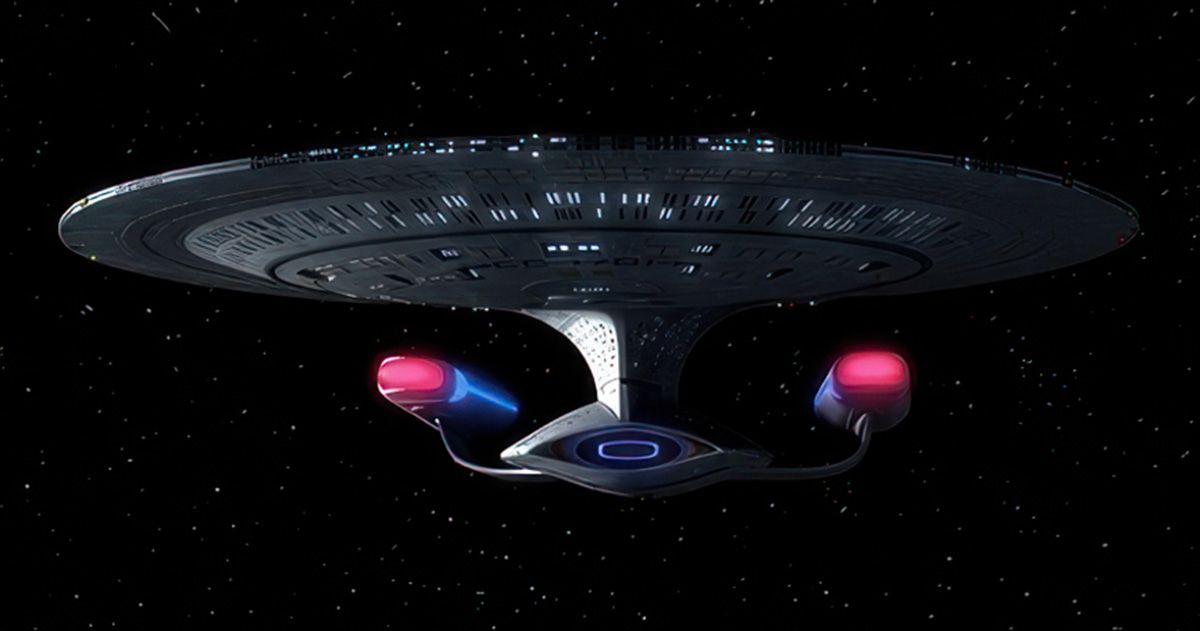
At the helm was Captain Jean-Luc Picard, a man whose head was as smooth as the ship's warp nacelles and whose voice could convince a Ferengi to give away his latinum. Picard ran a tight ship, unless the Borg were involved, in which case all bets were off and it was more like a game of interstellar tag where you really didn't want to be "it."
The Enterprise-D was a ship of high culture, where you could attend a Shakespeare play one night and fend off a Cardassian warship the next morning. It was the kind of place where an android could learn to paint, a Klingon could learn to smile, and a teenager could crash the ship because, apparently, Starfleet Academy's entrance exam didn't cover "don't hit the big red button."
This was the ship that introduced us to the holodeck, the ultimate VR experience that had a slight glitch of trying to kill the crew every other Tuesday. It was also the ship where you could have tea, Earl Grey, hot, materialize out of thin air, which was great until you realized the computer had a better memory of your favorite blend than your last five dates.
The D met its untimely demise not in a blaze of glory against a superior foe, but on a planet's surface after a scuffle with a single Bird-of-Prey, which was the equivalent of a Ferrari losing a drag race to a Vespa. It was a sad end for such a storied ship, but it went down fighting, which is more than you can say for most luxury liners.
In the end, the USS Enterprise NCC-1701-D was more than just a ship; it was a home, a sanctuary, and a character in its own right. It was the vessel where Picard and his crew taught us about humanity, diplomacy, and that sometimes, you just have to roll the dice and hope you don't end up as a historical footnote in a Starfleet cadet's term paper.
USS Enterprise NCC-1701-E
Sleeker, faster, and with a captain who could out-British the Queen, the E was the ship that took on the Borg in "First Contact." It traveled back in time to ensure humanity's first contact with aliens wasn't just a footnote in a Borg travel guide.
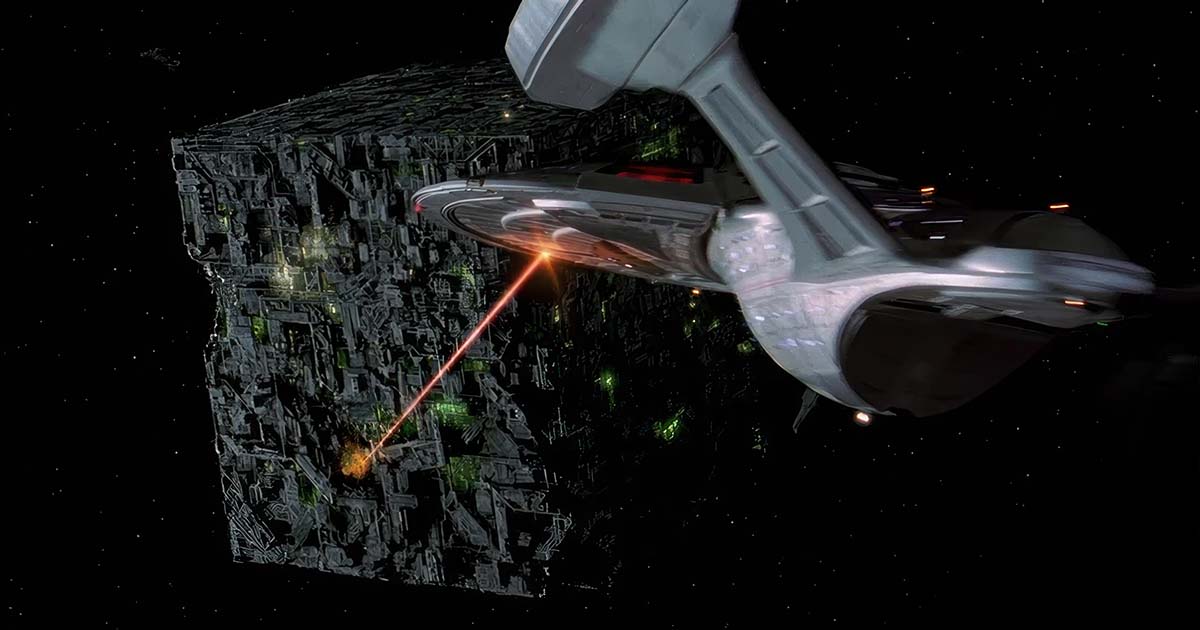
USS Enterprise NCC-1701-F
USS Enterprise NCC-1701-F, the fresh face in the fleet, the one with that new starship smell that makes seasoned ensigns swoon.
In "Star Trek: Picard," the F is the shiny toy that makes the older models look like they belong in a museum, preferably one with a café that serves a decent Raktajino.

Admiral Elizabeth Shelby, known for her "I eat Borg for breakfast" attitude back when she was a sprightly commander, takes the wheel of this interstellar marvel. She's the kind of leader who looks at a warp core breach and says, "Not on my watch," with enough conviction that you'd believe she could fix it with a stern look and some technobabble.
The Enterprise-F is the space equivalent of walking into an electronics store and saying, "I'll take the most expensive thing you've got, and do you have it in black?" It's the ship that arrives at a diplomatic conference and unintentionally makes all the other starships in orbit feel like they need to hit the gym.
This is the starship where holodecks are passé, and the crew dabbles in quantum recreation, where you can climb a holographic Mount Everest and still be back in time for your shift, without the frostbite. It's the ship where the replicators don't just make food; they create culinary experiences that make you question whether you've ever really tasted a tomato before.
On the F, the bridge is less of a command center and more of a statement piece. It's where you can find officers casually leaning on consoles that are more advanced than anything the previous Enterprises had, consoles that probably require a degree in quantum astrophysics and a minor in fine arts to operate.
But let's not forget, the F is still an Enterprise, which means it's about 15 minutes away from encountering an anomaly that will make everyone question the nature of reality, or at least make them late for dinner. It's the ship that's equipped to handle anything the universe can throw at it, from time-traveling Romulans to an invasion of tribbles armed with adorable aggression.
In the end, the USS Enterprise NCC-1701-F is the continuation of a legacy, a testament to Starfleet's commitment to going bigger, faster, and bolder. It's the ship that looks at the unknown and says, "Hold my synthale," all while making it look effortlessly cool. It's the vessel that will carry the name Enterprise into the future, boldly going where, well, you know the rest.
USS Enterprise NCC-1701-J
A vessel from a time so far ahead that it makes the 24th-century tech look like two cans connected by string.
In this potential 26th-century timeline, the J is the kind of ship that doesn't just warp space but probably folds it into origami swans for fun. Captain Dax, the latest in a long line of hosts who've collectively seen more action than the holodeck on a Saturday night, steers this behemoth through the stars with the ease of someone who's lived several lifetimes and then some.
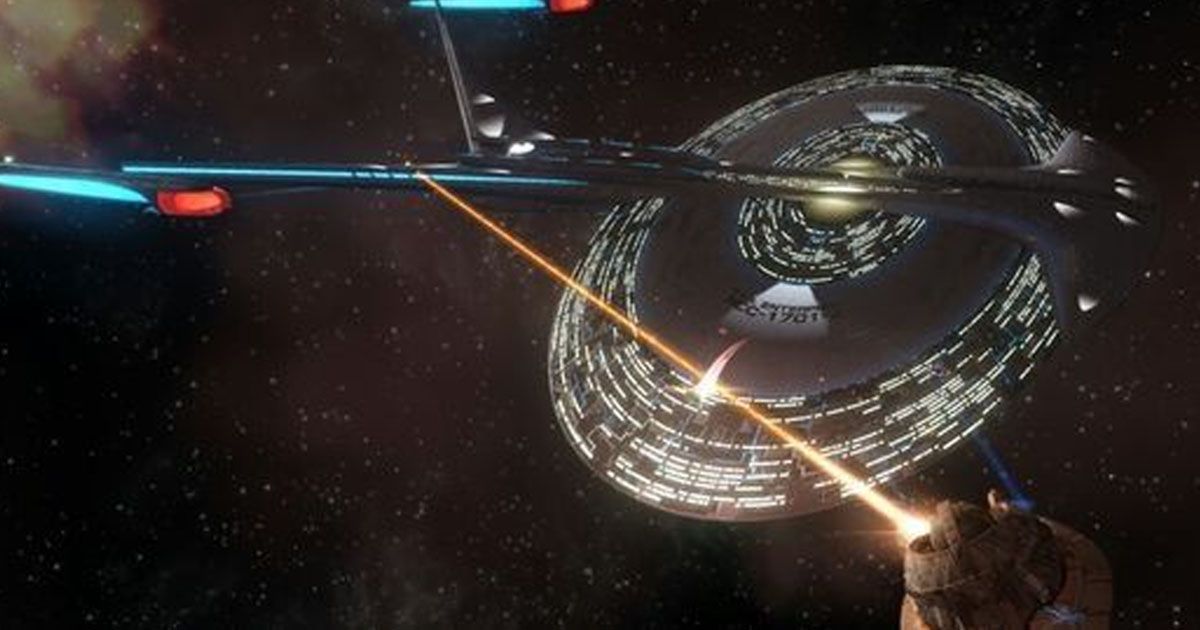
The J is the ship that makes quantum physicists scratch their heads and say, "Well, that's new." It's the kind of starship where the transporter room is just for show because everyone's using personal teleportation devices that make the old beam-up process look like waiting for dial-up internet.
This is the Enterprise where the holodecks have been replaced by actual pocket universes where you can live out your wildest fantasies without the fear of the safety protocols failing... again. It's the ship where the food replicators are so passé, and the crew dines on cuisine teleported fresh from across the galaxy because, why not?
Captain Dax, with a symbiont that's probably got enough historical anecdotes to fill a library, brings a level of experience to the table that's quite literally unparalleled. The J's crew looks to Dax not just for orders but for the occasional riveting tale of "that one time on Risa," which, by the 26th century, has become a classic.
The Enterprise-J doesn't just face down threats; it probably chats with them over a cup of tea before diplomatically convincing them that maybe universal domination isn't as fulfilling as a good book or a hobby. It's the ship that has technology so advanced, it's rumored the warp core can run on the sheer power of nostalgia for the good ol' days of dilithium crystals.
In the end, the USS Enterprise NCC-1701-J is the dream of a future where the final frontier is just the beginning, and the ship itself is a marvel that stretches the imagination. It's the vessel that looks at the past Enterprises and says, "Hold my synthale, and watch this." It's a testament to the enduring legacy of exploration, the kind that says, "They sure don't build 'em like they used to," and for once, everyone's glad they don't.
ISS Enterprise NX-01 (Mirror Universe)
The Mirror Universe's NX-01 is the leather-clad, rule-breaking rebel of the starship lineage, the kind of ship that would chew up a prime universe's starship and spit out the bolts. It's the ship that looks at the Prime Directive and laughs maniacally while polishing its phaser cannons. Captain Forrest, and later the even more deviously ambitious Archer, showed us a universe where Starfleet's motto is less "to go boldly" and more "to take whatever we want, and look darn good doing it, boldly."
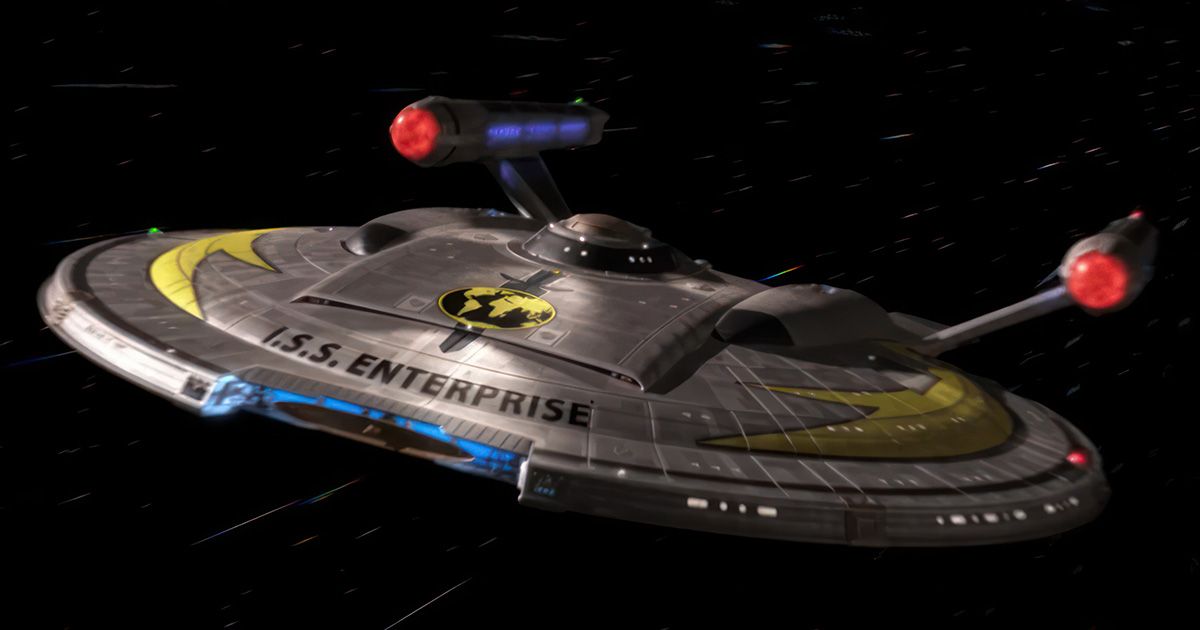
This is the ship where the transporter room doubles as an interrogation room, and the Vulcan nerve pinch is replaced by the less subtle "Vulcan right hook." It's a ship where the mess hall serves up a side of conspiracy with every meal, and you'd better believe the chef is packing more than just a ladle.
The ISS Enterprise doesn't just explore new worlds; it conquers them. It doesn't seek out new life and new civilizations; it drafts them into the Imperial service. And it certainly doesn't do anything as pedestrian as "hailing frequencies open." It's more 'hailing frequencies open if you must, but let's just shoot them first and ask questions later.'
Captain Forrest may have started at the helm, but it was Archer, with his commandeered USS Defiant – a ship so advanced that the Mirror Universe didn't know what hit it – who took treachery to new heights. Under his command, the NX-01 became the terror of the quadrant, the kind of posting that made even the most hardened Starfleet officers consider a nice, quiet desk job.
The crew of the Mirror NX-01 didn't just wear goatees; they wore them as badges of honor, a sign that they were the antithesis of their clean-shaven, do-gooder counterparts. In this universe, it's not the size of your starship that counts; it's the ferocity with which you can betray your closest allies.
In the end, the ISS Enterprise NX-01 (Mirror Universe) is the ship that reminds us all that somewhere out there, there's a version of us that's a little more cutthroat, a little more ruthless, and a whole lot more into leather. It's the starship that proves that even in a universe where everything is flipped, some things remain constant – like the name Enterprise striking fear (or awe) into the hearts of everyone who hears it.
USS Enterprise (Alternate Reality)
The Kelvin Timeline's Enterprise is the hotshot cousin of the fleet, the one that shows up to the family reunion with a louder engine and a paint job so sleek it makes the stars themselves stop and stare. It's like the original series Enterprise went to the gym, got buff, and started a band. Captain James T. Kirk, the daredevil with a smirk that could probably convince a Vulcan to take up stand-up comedy, leads this ship with an enthusiasm that says, "I might not have read the manual, but I've definitely watched the movie."
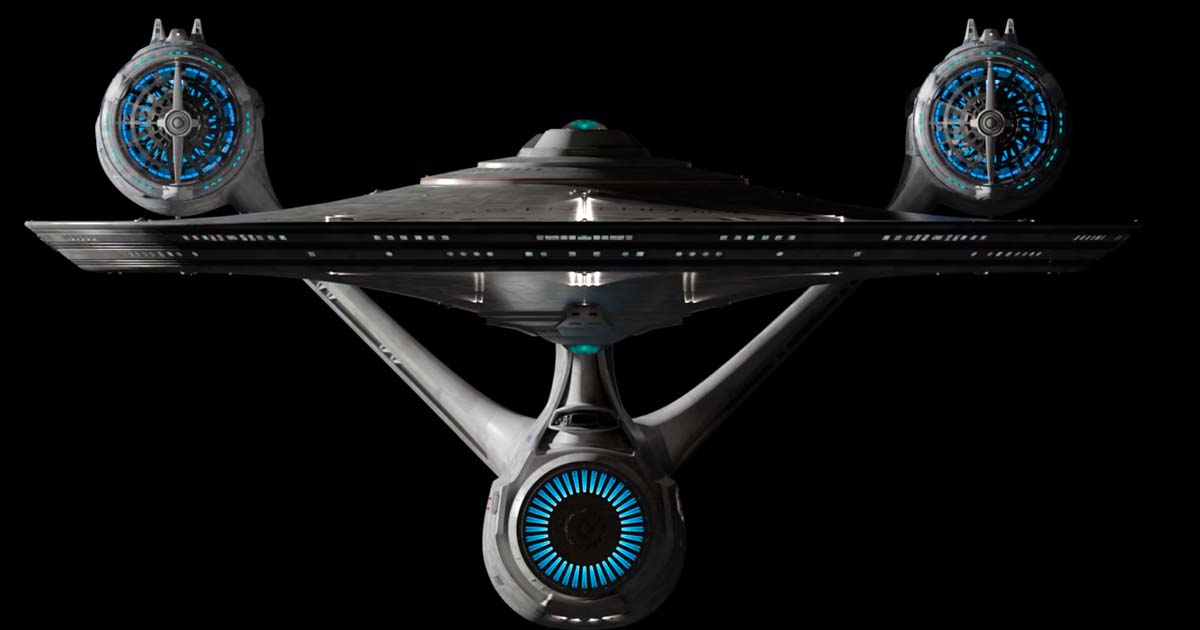
This is the Enterprise that treats the laws of physics more like guidelines, bending space-time with a casual bravado and a penchant for dramatic pauses. It's the ship where Scotty's engineering miracles aren't just expected, they're delivered with a side of Scottish snark and an "I told you so."
The bridge of the Kelvin Timeline's Enterprise is less a command center and more a futuristic lounge, complete with chairs so comfortable you'd forget you're on red alert. And the lens flares? They're not just a visual effect; they're practically a crew member, present at every dramatic turn to ensure that the future is not just bright, it's blinding.
This is the ship that looks at a no-win scenario and says, "Hold my beer." It's the Enterprise that dives headfirst into black holes, comes out the other side with its hair mussed, and still gets the girl. It's the starship that makes you think, "Maybe messing with the timeline wasn't such a bad idea if it means we get to drive that."
And let's not forget the action. The Alternate Reality Enterprise doesn't just engage in battles; it choreographs them like a ballet, with phasers and photon torpedoes in a deadly dance that's as beautiful as it is explosive. It's the ship that says, "We might be an alternate reality, but we're the reality you wish you were in."
In the end, the USS Enterprise of the Alternate Reality is the embodiment of a universe that's familiar yet fresh, a place where the adventures are bigger, the stakes are higher, and the uniforms are tighter. It's the ship that takes the legacy of the name Enterprise and runs with it, straight into the heart of the nearest supernova, because in this reality, even supernovas are just part of the show.
